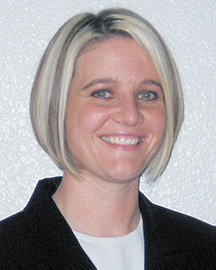 Futures For You
Futures For YouQ&A
 Futures For You
Futures For YouInside The Futures World
Want to find out how the futures markets really work? Carley Garner is the senior strategist for DeCarley Trading LLC, where she also works as a broker. To submit a question, post your question at https://Message-Boards.Traders.com. Answers will be posted there, and selected questions will appear in a future issue of S&C. Visit Garner at www.DeCarleyTrading.com and subscribe to her free e-newsletters. Her books, Currency Trading In The Forex And Futures
Markets, Commodity Options, and A Trader’s
First Book On Commodities, are available from FT
Press.
CHOOSING A TRADING PLATFORM
What criteria should I use for choosing a trading platform?
It is in the best interests of brokerage firms to make it as easy as possible for their clients to trade. After all, they generate revenue on each transaction and the more convenient it is to enter an order, the more commission they could earn. Accordingly, brokerage firms have worked hard to provide each type of trader an attractive trading solution.
Unfortunately, finding the appropriate platform for your circumstances can be a cumbersome task. Platforms come in all sizes, costs, and specialties, but not all brokerage firms offer all platforms. Further, even platforms developed by third-party vendors likely have different data providers and will certainly have differing margin rules across various brokerage firms. This is because the brokers and exchanges set margin policy, not the platform. Thus, traders should consider their choice of brokerage house and platform within the same process.
Several futures trading platforms are offered to clients for free. In fact, most brokerage firms will offer at least one no-cost order entry solution. In the past, free platforms were challenged in features, but now, there are some highly capable complimentary offerings. Many include real-time and streaming quotes on options and futures, and perhaps even a nice charting package.
For the casual position trader, these often meet their needs and make premium (and costly) platforms unnecessary. Nonetheless, daytraders or swing traders who need a more robust application might find it worthwhile to pay a little more for increased functionality. In the end, the goal is to make money, not to save it. If having premium charts and order entry will help your strategy, then it is money well spent.
Paid platforms provide traders with access to streaming real-time quotes with deluxe charting and point & click order entry capabilities, but bear in mind it might be necessary to purchase price data in addition to the trading software. Although many of the free platforms provide similar functions, paid-for platforms advertise low-latency execution, more convenient order entry features, more user-friendly charting, the ability to automate strategies, and may even allow you to develop your own indicators.
For instance, these types of platforms enable traders to enter multiple entry prices when trading more than one contract. Once filled, they can instruct the platform to place multiple exit orders at various prices and even trail stop-loss orders higher to protect open profits. Traders might also program the platform to enter a trade if particular events occur, such as specific prices being hit or oscillators behaving in a certain way.
These types of orders are known as contingency orders because they depend on a specific event occurring. Traders should be aware of whether such orders are held “server-side” or on the trader’s computer. Contingent orders rely on software to execute or cancel them based on another event occurring. If you utilize them, it is a good idea to choose a platform capable of holding the accompanying execution instructions on an offsite server and not your computer. This is because in a server-side arrangement, your orders will still be working and executed even if your personal computer loses connection, or crashes.
Some platforms charge a monthly fee, but many upgraded ones charge a usage fee on a per-side basis. This means that a set fee is charged to the trading account each time a trade is executed. I have witnessed fees ranging from as high as $1.50 per side to as low as $0.15. The brokerage firm often subsidizes platform costs that fall on the lower end.
Remember: a trade consists of two sides, referred to as a round turn. A trader being charged a per-side platform fee would be charged when entering the market and again when exiting.
I have found the functionality difference between platforms charging a fee on the high end of the price range relative to the low end is minimal. The higher-priced platforms tend to offer automated system trading and development to justify higher fees while others charge higher transaction fees, claiming to offer faster server communication. For those not developing and implementing proprietary systems or scalping small intraday price moves, less costly platforms are often recommended.
Traders who intend to do a considerable amount of volume may be better off choosing a platform that offers flat monthly fees as opposed to transaction-based fees. But lower-volume traders know they pay only for what they use. While $0.15 per side doesn’t seem like a lot, it is equal to $0.30 per round turn and $300 for those trading 1,000 round turns a month. There are flat monthly subscription-based platforms in this price range, but most go for far less with chart capabilities and order entry features to meet the needs of most traders.
Choosing the right platform for your situation is challenging, but choosing the wrong platform can be an expensive mistake. Consult with a good broker for guidance!